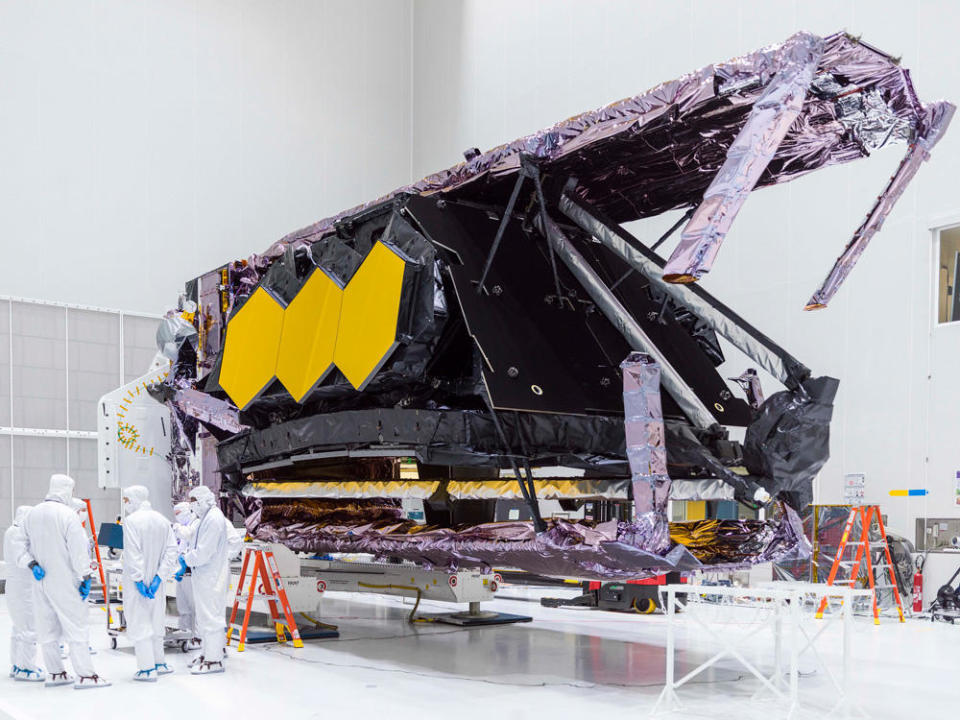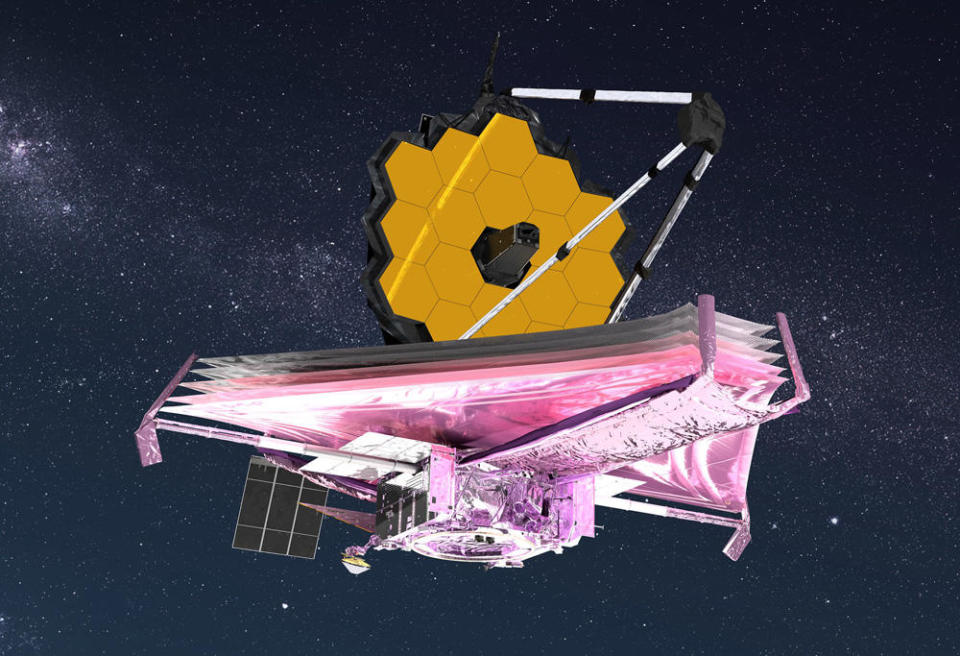NASA delays James Webb Space Telescope launch after "incident"
The long-awaited launch of the nearly $10 billion James Webb Space Telescope is slipping at least four days, from December 18 to no earlier than December 22, after an incident during processing in French Guiana that briefly jostled the costly observatory.
The European consortium Arianespace is readying the infrared telescope for launch atop an Ariane 5 rocket in partnership with the European Space Agency and NASA, saving the U.S. agency to cost of boosting the observatory into space.
The incident occurred in a processing facility at the Ariane 5 launch site in Kourou, French Guiana. A high-tension "clamp band," used to attach the telescope to an adapter that will, in turn, be mounted atop the rocket's upper stage, suddenly released on its own, briefly shaking the observatory.
NASA has convened an "anomaly review board" to assess the incident, find out what caused the clamp band to release and to determine if any of the observatory's mechanisms or sub-systems might have been damaged or shaken out of the precise alignment needed for smooth operations.
Related video: NASA, Lockheed Martin hope to bring back commercial supersonic travel
"That clamp band came off ... in a way that the clamp band is not designed to come off," NASA science chief Thomas Zurbuchen told reporters. "It was an anomaly, and of course when you work on a $10 billion telescope, conservatism is the order of the day."
Sensors that could have precisely measured the vibrations were in place during Webb's shipment from California though the Panama Canal and onto French Guiana, but Zurbuchen said they had been removed as part of the telescope's pre-launch processing.
He said engineers are assessing "a small number of subsystems" and plan to carry out functional tests "just to be sure that nothing happened."
"So that's what we're working on, that's why we need just a few extra days," he said. "We've always said that we will launch this telescope when we're absolutely ready to go. ... I hope in just a few days here we will be in good shape."

Unlike the more traditional Hubble Space Telescope, Webb's much larger 21-foot-wide primary mirror and the sunshade needed to keep the infrared telescope at temperatures near absolute zero were designed to be folded up for launch.
Once in space, the tennis court-size sunshade, made up of five membranes the thickness of a human hair, must be released and pulled taught by scores of motor-driven cables routed through dozens of pulleys.
The telescope's secondary mirror, mounted atop a folded tripod, must deploy and lock in place and six of the primary mirror's 18 segments, which were folded away for launch, must rotate into position.
Those deployments and others, including Webb's solar array and radiator panels, all must deploy as planned for the telescope to capture the faint infrared light generated by the first generations of stars and galaxies that formed in the wake of the big bang.
Webb was designed to endure the vibrations and acoustics of launch, but it's not yet known what sort of "loads" the unplanned clamp release might have imparted or what caused the mechanism to release in the first place.
Jurors for "Unite the Right" civil trial will continue deliberations Tuesday
Economic woes cripple Biden approval ratings, new polling shows
U.S. COVID-19 deaths in 2021 surpass 2020 death toll, according to Johns Hopkins University



